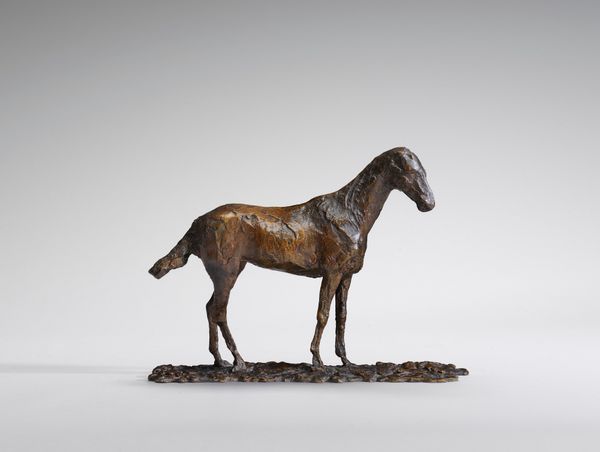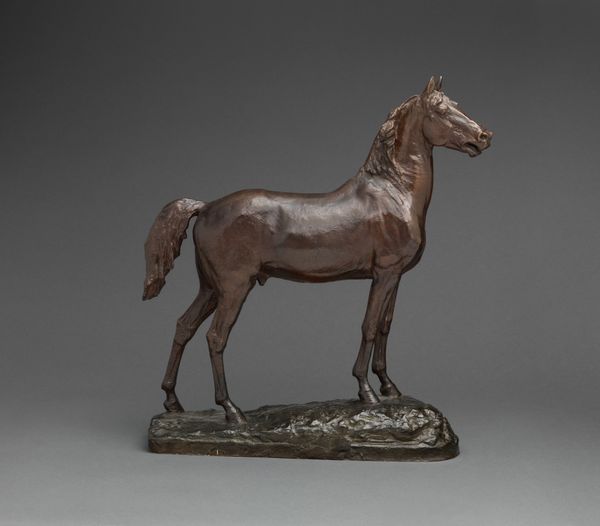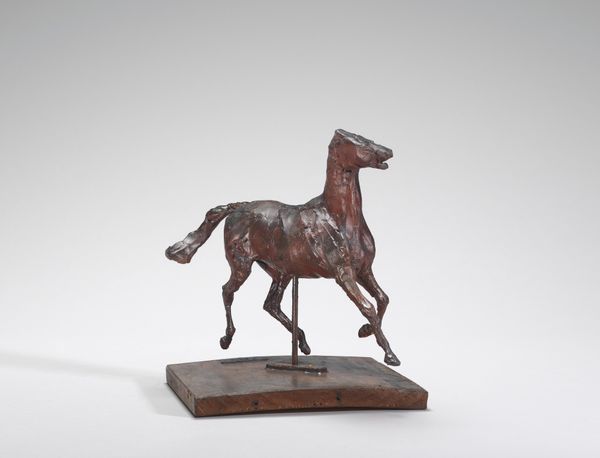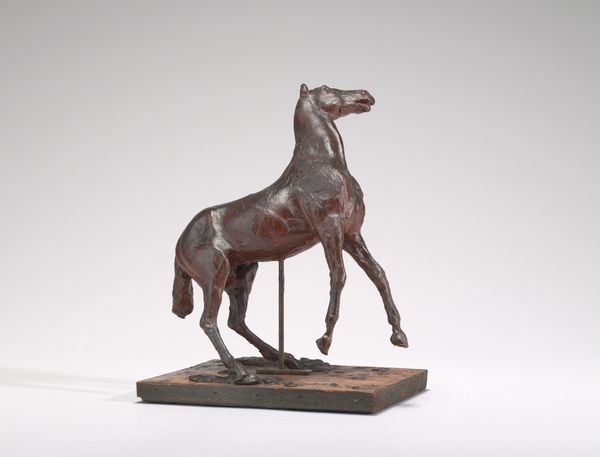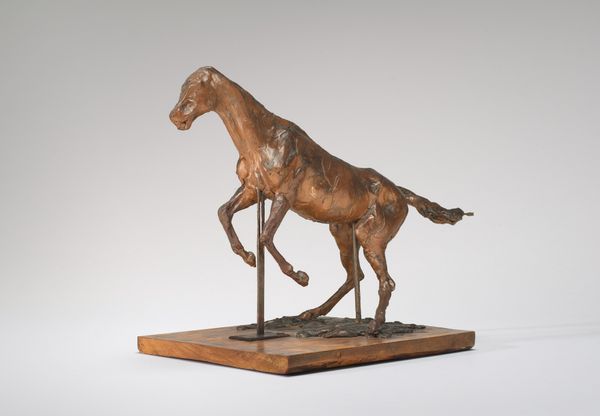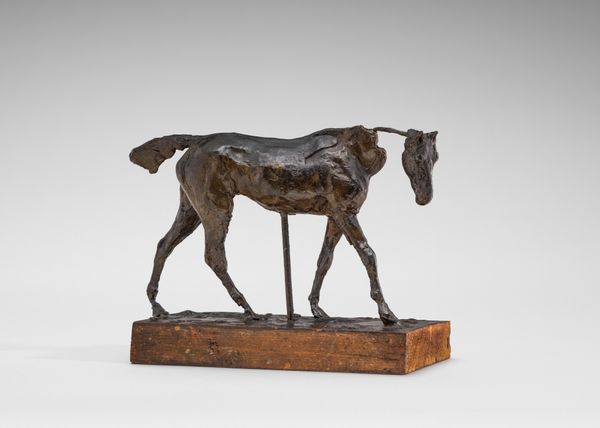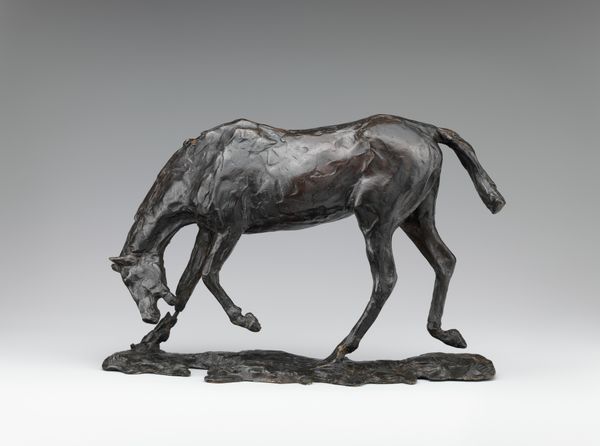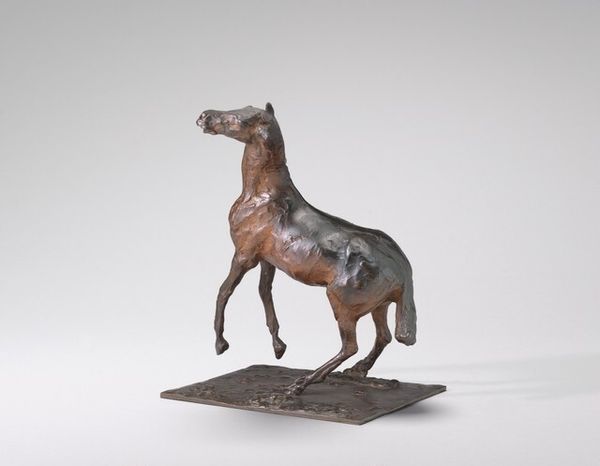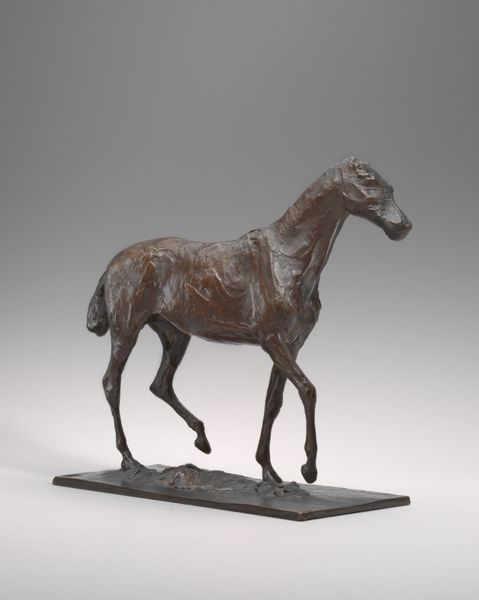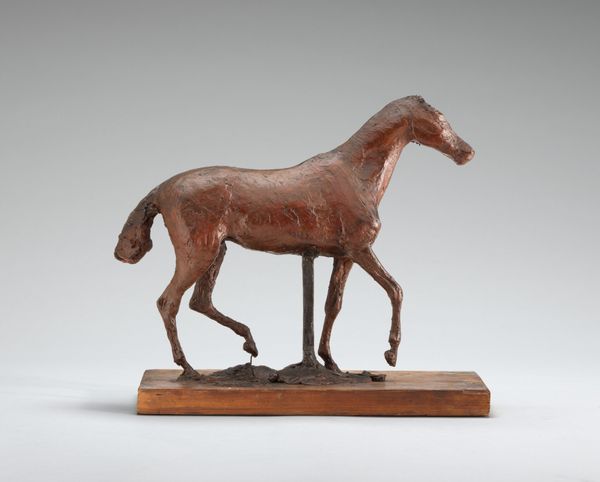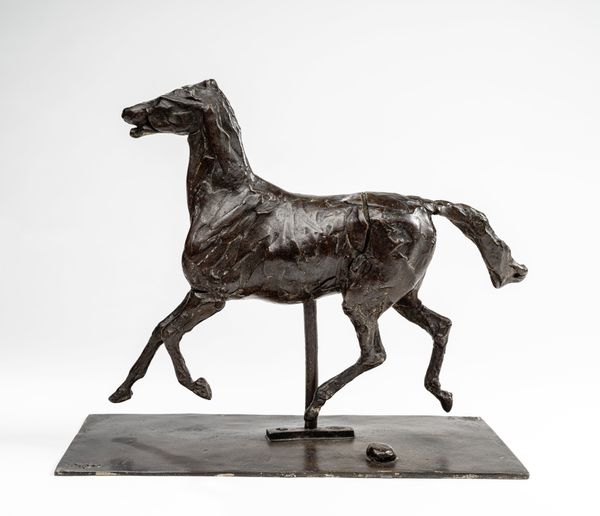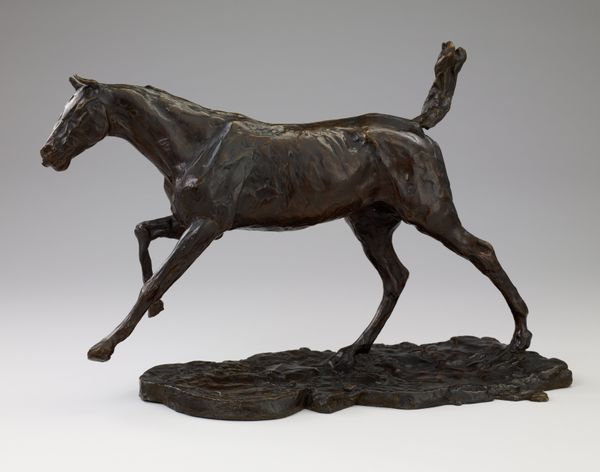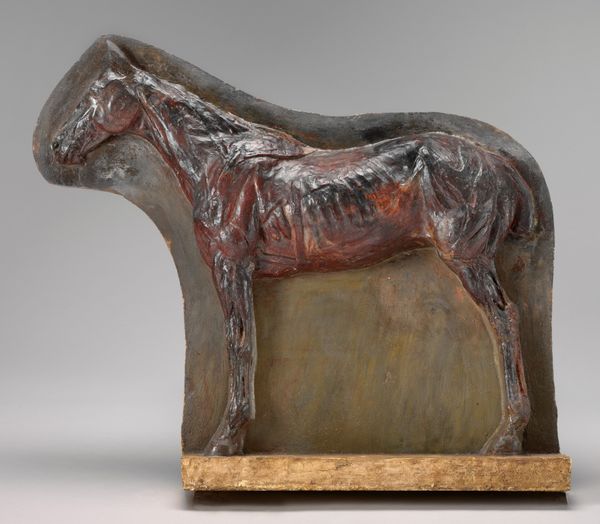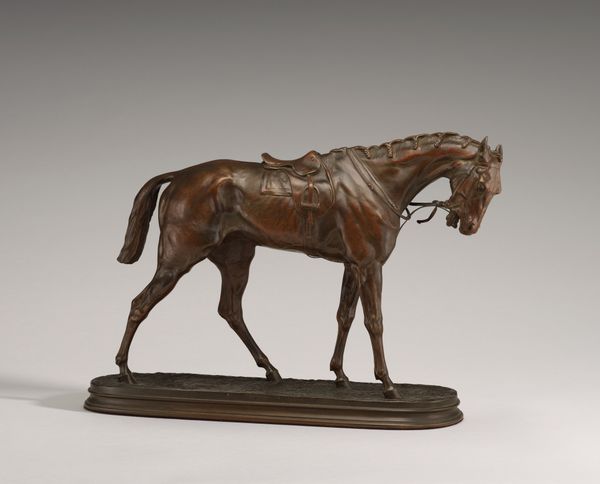
ceramic, sculpture
#
ceramic
#
sculpture
#
horse
#
decorative-art
Dimensions: Height: 7 3/4 in. (19.7 cm)
Copyright: Public Domain
Curator: This delightful Whieldon-type ceramic sculpture, known simply as "Horse," was crafted sometime between 1745 and 1765. It’s currently housed here at the Metropolitan Museum of Art. Editor: My initial impression? A sense of quaint domesticity. It's quite charming. The mottled glazing gives it a certain warmth. Curator: Indeed. Whieldon-type ceramics, named after the English potter Thomas Whieldon, were renowned for their innovative use of colored glazes. Here, the craftsman has masterfully blended browns and creams to create a lifelike texture in the horse's coat. It points towards an interest in more closely emulating the natural world in decorative art, while democratizing that art for the middling sorts. Editor: It's intriguing to consider this piece within its social context. The mid-18th century witnessed a growing fascination with horses, especially among the aristocracy and emerging bourgeoisie. Owning a horse was a symbol of status, of freedom. Does this piece, perhaps, speak to aspirations of social mobility and the evolving relationship between humans and animals in a rapidly changing world? Curator: Absolutely. And thinking about the making itself—the process. Ceramics were becoming more readily available thanks to advancements in production. The very materiality speaks to burgeoning industries and expanding consumer markets. Who was producing, and who was consuming these objects, and what does this say about 18th century globalized trade? Editor: The fact that this sculpture is unsigned prompts us to ponder questions of labor and craftsmanship. What role did the individual artisan play versus the larger factory setting in its creation? This speaks volumes about class structures. Also, I see something akin to an objectification or, shall we say, decorative exploitation here? Domesticating, displaying the animal for its beauty... It touches upon critical questions about the way society, then and now, relates to the animal kingdom. Curator: I see it as evidence of the expansion of luxury goods. These new techniques served a growing market for objects that spoke of prosperity and refinement, of having the money and leisure time for display and enjoyment. How, and in what contexts, was it originally enjoyed, and does that continue? Editor: This was an intriguing exploration into the confluence of artistry, industry, and the narratives woven into decorative objects of the past. Curator: Yes, it reveals layers upon layers of meanings about a time of great transformation. It remains for us to examine more deeply!
Comments
No comments
Be the first to comment and join the conversation on the ultimate creative platform.
